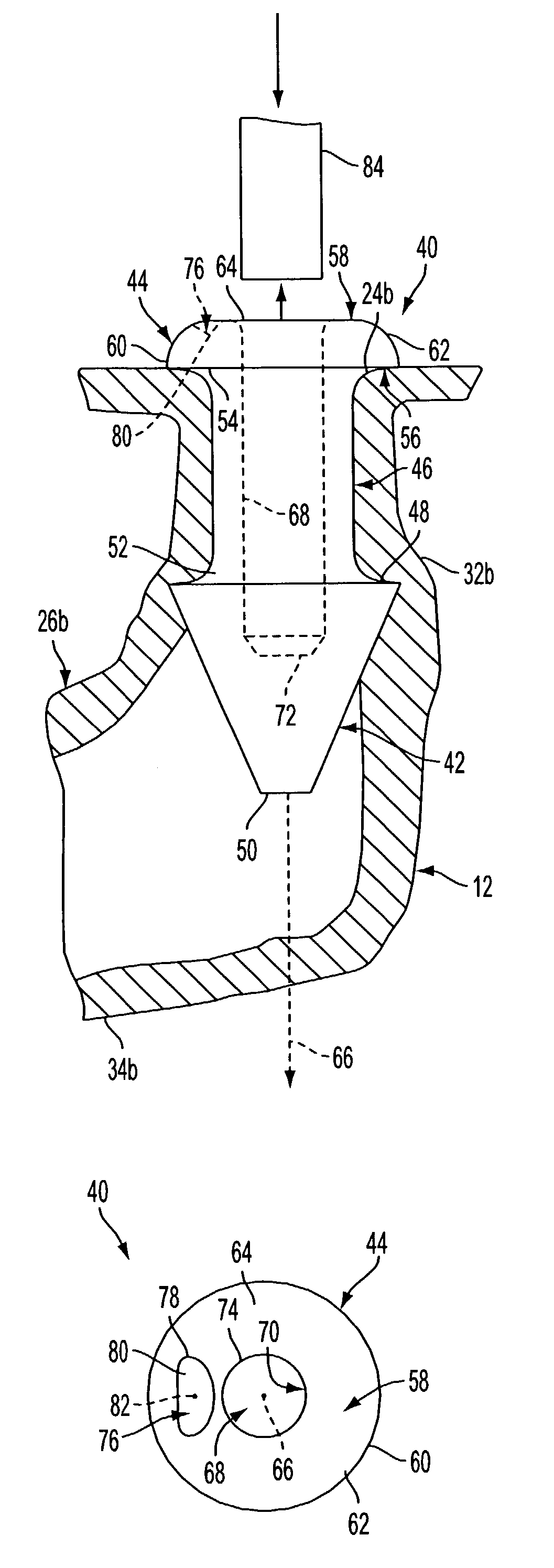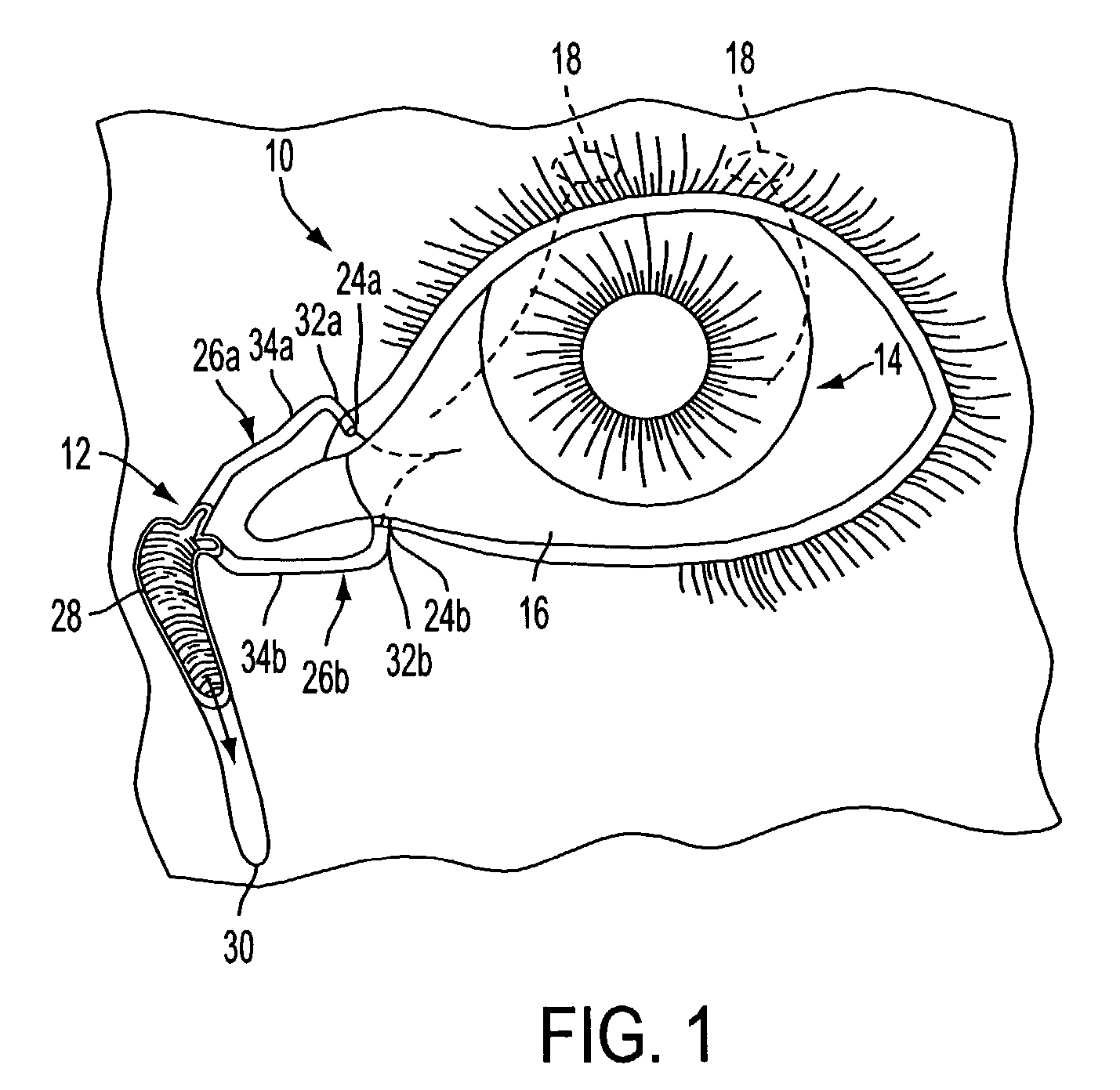Punctum plugs having fluid collecting recesses and methods of punctal occlusion
- Summary
- Abstract
- Description
- Claims
- Application Information
AI Technical Summary
Benefits of technology
Problems solved by technology
Method used
Image
Examples
Embodiment Construction
[0037]FIG. 1 depicts an eye 10 and its lacrimal drainage system 12. Eye 10 comprises eyeball 14 having cornea 16. A series of small lacrimal glands 18 spaced apart from one another above cornea 16 produce constant tears, and a large lacrimal gland 20 produces crying tears. The cornea 16 and the inner surfaces of the eyelids are moisturized and lubricated by tear fluid, which forms a tear film over the cornea 16. The tear film serves to wet and lubricate the eye through a balance of an outer lipid (oily) layer, a middle aqueous (watery) layer and an inner mucin (mucous) layer. Tear fluid drains from the eye through the lacrimal drainage system 12 comprising upper punctum and lower punctum having upper and lower punctal openings 24a and 24b, respectively, communicating with respective upper and lower canalicular canals 26a and 26b leading to lacrimal sac 28 having nasolacrimal duct 30. The upper and lower punctal openings 24a and 24b are located at the inner corners of the upper and l...
PUM
 Login to View More
Login to View More Abstract
Description
Claims
Application Information
 Login to View More
Login to View More - Generate Ideas
- Intellectual Property
- Life Sciences
- Materials
- Tech Scout
- Unparalleled Data Quality
- Higher Quality Content
- 60% Fewer Hallucinations
Browse by: Latest US Patents, China's latest patents, Technical Efficacy Thesaurus, Application Domain, Technology Topic, Popular Technical Reports.
© 2025 PatSnap. All rights reserved.Legal|Privacy policy|Modern Slavery Act Transparency Statement|Sitemap|About US| Contact US: help@patsnap.com



